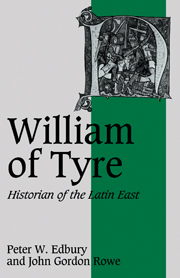Conclusion
Published online by Cambridge University Press: 09 October 2009
Summary
The sheer bulk of the Historia has meant that all too often it has been regarded as a mine of information rather than appreciated as a treasure of historical literature. But its size and the scope of its subject-matter should not be allowed to obscure its literary form or the unity of its message. While inevitably the historical value of its contents varies, its structure and dynamic achieve an impressive level of attainment. This said, it remains true that the work took at least fourteen years to write and that its author was prey to a multitude of distractions and conflicting influences. Hence he was in no position to provide each page with an equal consistency of purpose or standard of execution. Only in the story of the First Crusade did his narrative achieve a genuine homogeneity. Here the natural flow of events and a well-defined interpretation bring the diplomatic exchanges, the battle scenes and the long and terrible marches together to sustain a unified conception on a scale unparalleled elsewhere. Thereafter the Historia consists of a succession of reports, episodes and vignettes through which William's theme of warfare against the unbelievers continues to run. Only occasionally did he digress to consider extraneous events in western Europe or the Byzantine empire or to include material on Latin Syrian ecclesiastical history, most notably on the misfortunes of his province of Tyre.
- Type
- Chapter
- Information
- William of TyreHistorian of the Latin East, pp. 167 - 174Publisher: Cambridge University PressPrint publication year: 1988



